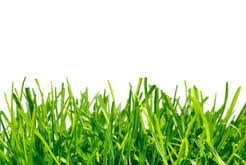Kathleen Finnegan
Home(818) 601-0056
tips for drought-proofing your yard
Fighting drought can be time-consuming and expensive. With forecasters and scientists predicting warming temperatures and more extreme weather events as the new normal, there’s plenty of evidence to suggest that droughts could become more common and severe in the future. Making some changes to your approach to landscaping can keep you from worrying about your water bill and the well-being of your lawn when the weather isn’t quite cooperating.
Here are four ways to drought-proof your yard:
* Choose your plants wisely. You may want to choose plants solely based on aesthetics, but picking plants that thrive with less water is the key to keep your yard looking good no matter the conditions. Talk with the experts at your garden center about which types of plants make the most sense for your climate, and which ones might be a little more drought-resistant than others.
* Go easy on the grass. For some it’s hard to imagine a picturesque yard without a lush and expansive yard. But the truth is, a green lawn usually requires a lot of water to maintain. The Southern Nevada Water Authority estimates that every square foot of natural grass replaced with less water-dependent alternatives saves 55 gallons of water per year. If you don’t want to part ways with your lawn in favor of natural landscaping that’s more water-friendly, you have another option: synthetic turf.
Any sports fan would know that synthetic turf has come a long way over the years, and now looks more natural than ever. Companies like Synthetic Turf International- (STI) specialize in providing synthetic turf for residential and commercial uses that looks and performs like natural grass that could save 99,000 gallons of water each year for an average lawn of 1,800 square feet. The SoftLawn product from STI requires virtually zero maintenance, can be easily maintained with a leaf blower and is made from 100 percent biodegradable or recyclable materials. Considering the average homeowner spends 150 hours a year maintaining his lawn, you can save a lot of time and money by going synthetic. Examples of synthetic lawns can be found at www.synthetic-turf.com.
* Add mulch. Covering the soil around your plants with a layer of mulch or compost can help improve water retention, inhibit growth of water-hungry weeds and cool soil temperatures to keep your plants comfortable when temperatures rise. Natural mulches break down and are absorbed into your soil, which means there’s little maintenance besides adding a new layer when appropriate.
* Make your water work harder for you. No matter what you do to drought-proof your lawn, you’ll likely still have to do some watering. Drip irrigation systems can make your water go further by applying it directly to the root of plants. If you’re watering by hand, water in the morning when temperatures are cool, and apply water to the soil rather than directly to the plants. Installing a rain barrel is a great way to put the water that runs off your house to good use – and you can use that water even if watering restrictions are in effect.
Thanks for read.
Kathleen Finnegan
23925 Park Sorrento
Calabasas, Ca 91302
#01193021
Office 818-876-3111
Cell 818-601-0056

 Kathleen has been active in the Calabasas real estate market for over 20 years. Have a question?
Kathleen has been active in the Calabasas real estate market for over 20 years. Have a question? 

